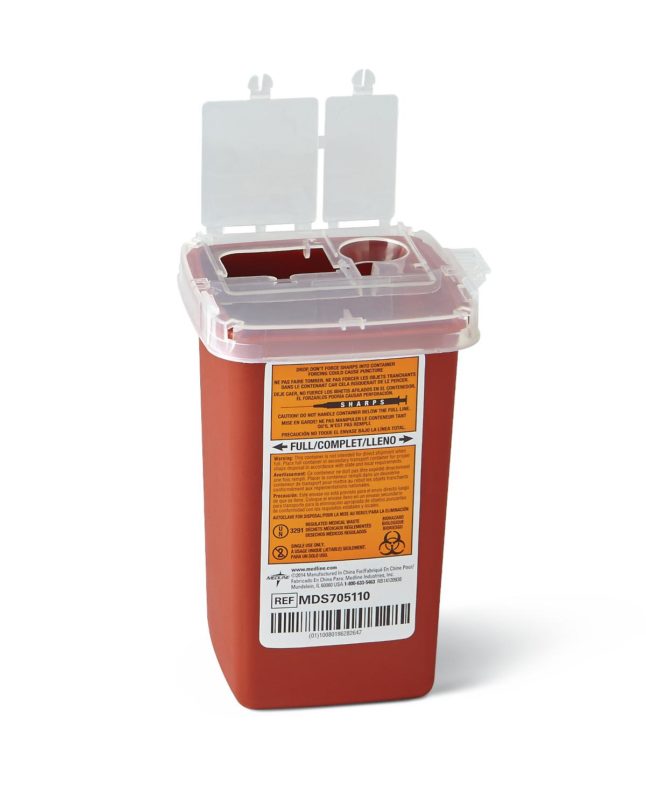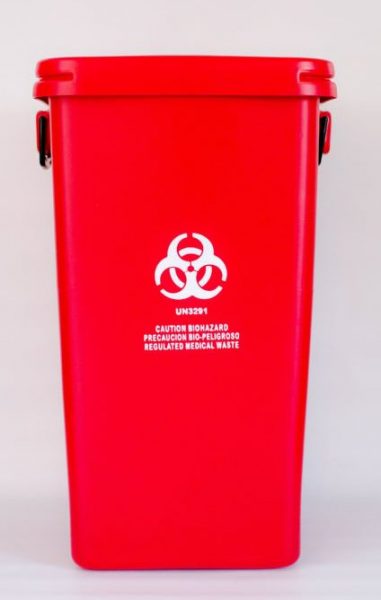Your Relied On Companion: Medical Waste Removal Services Tailored to Your Demands
Your Relied On Companion: Medical Waste Removal Services Tailored to Your Demands
Blog Article
Minimize Expenses and Take Full Advantage Of Safety: Effective Medical Waste Disposal Techniques
Efficient medical waste disposal techniques are critical for medical care facilities to decrease costs and make the most of security. By applying appropriate partition and categorization, reliable packaging and labeling, risk-free transport and handling, reliable therapy and disposal approaches, and compliance with regulative standards, medical care centers can make sure the responsible and safe monitoring of medical waste.

Correct Segregation and Categorization
Proper segregation and categorization are important parts of effective clinical garbage disposal methods, making sure the safety of medical care workers, the public, and the environment - medical waste removal near me. medical waste disposal services with WasteX. By dividing various kinds of medical waste at the point of generation, healthcare facilities can lessen the risk of cross-contamination and potential injury to environments and people
Among the essential consider proper partition is the recognition and classification of medical waste. This includes categorizing waste right into different teams, such as contagious, hazardous, radioactive, or pharmaceutical waste. Each category calls for details handling, storage, and disposal techniques to avoid any kind of negative results on human wellness and the setting.
Additionally, proper partition also includes using color-coded containers and labels to plainly identify and set apart the different kinds of clinical waste. This aids healthcare workers and waste administration workers to quickly acknowledge and handle the waste properly. As an example, red containers may be made use of for contagious waste, while yellow containers may be designated for contaminated materials.
Along with segregation, appropriate classification also includes the correct packaging and containment of clinical waste. This ensures that waste is securely kept and carried without posing any kind of risks to people or the setting. Utilizing leak-proof and puncture-resistant containers, along with effectively sealing and labeling them, helps to prevent any type of unintended exposure or release of dangerous substances.
Efficient Product Packaging and Labeling
Efficient packaging and labeling play a vital function in guaranteeing the risk-free and effective disposal of clinical waste. Appropriate product packaging is necessary to stop leak, breakage, or splilling during transportation and handling. It aids to decrease the risk of contamination and protects health care employees, waste management employees, and the atmosphere from potential threats.
Medical waste must be packaged in tough and watertight containers that are immune to pierce and damage. These containers should be properly secured to avoid any leak. Furthermore, the packaging must have the ability to withstand the problems of transport, consisting of temperature variations and rough handling.
Identifying is equally vital as it provides important details concerning the materials of the waste and any possible dangers connected with it. The tags must consist of the name of the health care center, the type of waste, and any type of unique handling guidelines. Clear and standardized labeling ensures that waste monitoring employees can easily identify and deal with the waste appropriately.
Reliable packaging and labeling also help in the appropriate segregation and categorization of clinical waste. Clear labeling permits for easy recognition of different waste streams, such as transmittable waste, sharps, or pharmaceutical waste. This aids in streamlining the disposal process and making sure that the waste is treated or dealt with according to governing standards.
Safe Transportation and Handling
Making sure the safe transport and handling of clinical waste is of utmost value in order to protect against any possible health and wellness and ecological risks. Medical waste, such as sharps, polluted products, and pharmaceutical waste, need to be properly packaged and taken care of to decrease the danger of exposure to harmful materials and virus.
Moving clinical waste requires conformity with strict laws and standards established by environmental companies and neighborhood authorities. These guidelines aim to shield the health and wellness of workers involved in waste monitoring and prevent the release of harmful products right into the environment.
To guarantee secure transport, medical waste ought to be put in puncture-resistant and watertight containers that are correctly sealed and classified. These containers should be secured in a manner that stops spills or breakage during transportation (medical waste removal). Additionally, it is essential to use specific automobiles geared up with ideal security features to carry medical waste. These lorries need to have appropriate air flow and be made to avoid leakage or contamination.
Handling medical waste also needs correct training and adherence to security protocols. Personnel associated with the handling of clinical waste must use ideal personal protective devices (PPE) such as masks, gowns, and handwear covers to reduce the risk of direct exposure. They ought to also adhere to stringent hygiene techniques to avoid the spread of infections and ensure the safe disposal of waste.
Efficient Treatment and Disposal Methods
Carrying out proper treatment and disposal approaches is important in handling medical waste properly and reducing potential health and environmental dangers. Clinical waste, that includes sharps, infectious materials, chemicals, and drugs, can present significant dangers otherwise taken care of and dealt with effectively. There are a number of treatment and disposal methods available that abide by regulative standards and advertise secure practices.
One common method is incineration, which involves melting the waste at high temperatures. Incineration works in ruining pathogens and read this post here lowering the volume of waste, yet it can release dangerous contaminants right into the air if not correctly regulated. Consequently, it is necessary to use contemporary incinerators outfitted with discharge control modern technologies.
An additional technique is autoclaving, which makes use of steam and stress to decontaminate the waste. Autoclaving is efficient in eliminating microorganisms and minimizing the volume of waste, but it requires careful tracking and upkeep to make certain correct functioning. The decontaminated waste can then be safely disposed of in a land fill.
Chemical therapy is an additional alternative, which involves making use of anti-bacterials or various other chemicals to neutralize microorganisms. This technique is typically made use of for liquid waste, such as research laboratory specimens. It is crucial to use ideal chemicals and comply with appropriate treatments to make sure reliable treatment and prevent environmental contamination.

Compliance With Regulatory Standards
Adhering to governing guidelines is essential in making certain proper compliance with medical garbage disposal techniques. These guidelines are implemented to protect public wellness, prevent ecological contamination, and keep work environment security. Conformity Discover More Here with regulatory guidelines is crucial for healthcare facilities, as non-compliance can result in penalties, penalties, and reputational damage.
Governing guidelines outline the correct handling, storage space, transportation, and disposal of clinical waste. These standards likewise attend to the partition of various waste streams, such as sharps, transmittable waste, and pharmaceutical waste.
To maintain compliance, healthcare centers need to develop comprehensive waste administration programs that consist of personnel training, normal audits, and continuous surveillance. It is important to maintain up-to-date with any adjustments or updates to regulatory standards, as techniques may evolve with time. By remaining educated and executing proper procedures, healthcare facilities can reduce the capacity for regulatory offenses and protect the health and wellness of their team, people, and site web the surrounding neighborhood.
Conclusion
In final thought, implementing reliable clinical waste disposal strategies is important for maximizing and lessening prices safety. Correct segregation and categorization, reliable product packaging and labeling, secure transport and handling, and reliable therapy and disposal techniques are vital actions to make certain compliance with governing guidelines. medical waste removal services. By adhering to these strategies, health care centers can protect the setting and public health while additionally reducing monetary concerns related to clinical waste management
By applying proper partition and classification, reliable product packaging and labeling, secure transportation and handling, efficient treatment and disposal approaches, and conformity with regulatory guidelines, health care facilities can ensure the risk-free and liable administration of medical waste. Red containers may be made use of for infectious waste, while yellow containers may be marked for harmful waste.
Clear and standardized labeling makes certain that waste administration employees can quickly identify and take care of the waste suitably. (medical waste disposal services with WasteX)
Clear labeling permits for very easy identification of various waste streams, such as infectious waste, sharps, or pharmaceutical waste. These guidelines also deal with the segregation of different waste streams, such as sharps, infectious waste, and pharmaceutical waste.
Report this page